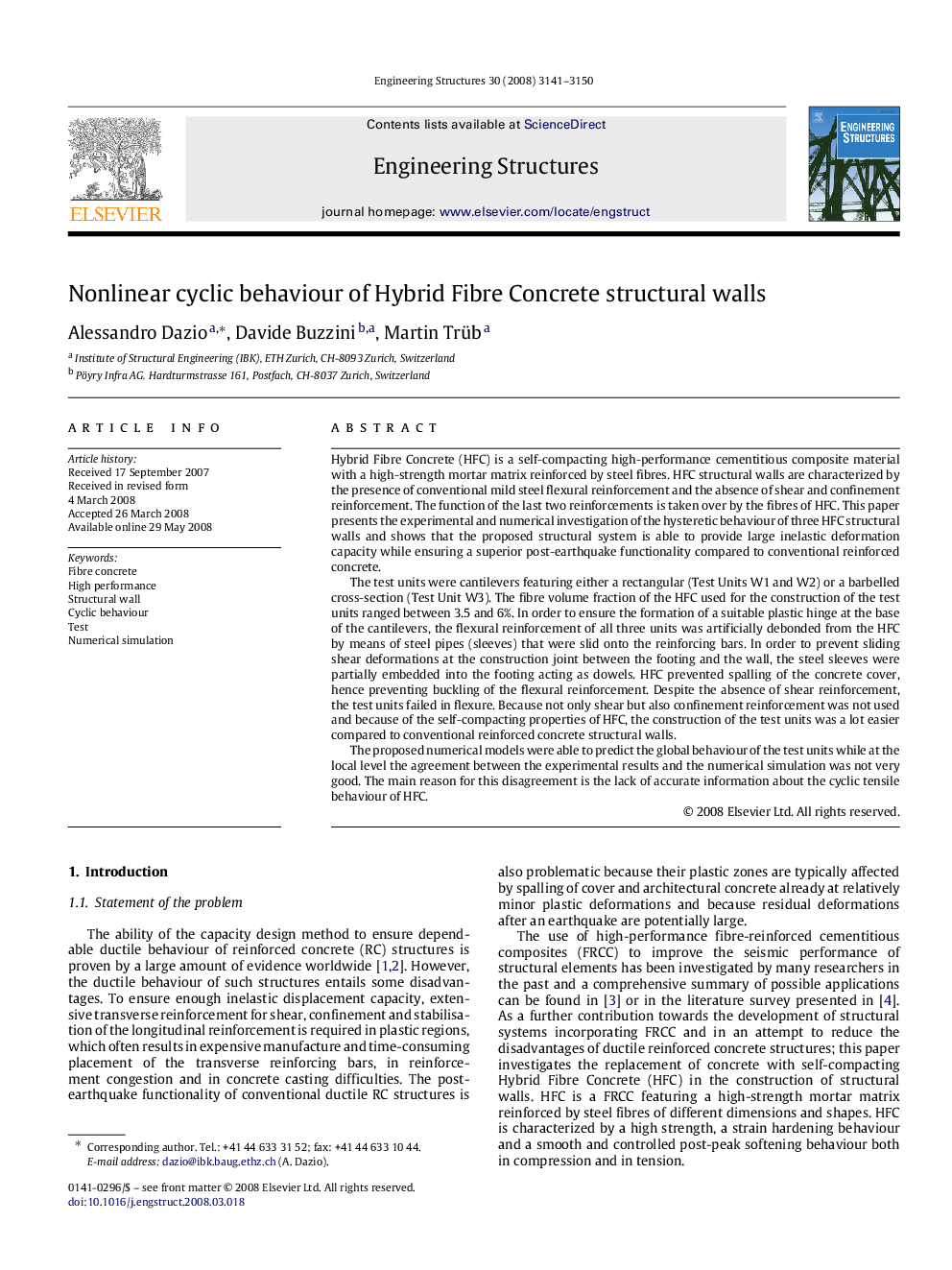| Article ID | Journal | Published Year | Pages | File Type |
|---|---|---|---|---|
| 268787 | Engineering Structures | 2008 | 10 Pages |
Hybrid Fibre Concrete (HFC) is a self-compacting high-performance cementitious composite material with a high-strength mortar matrix reinforced by steel fibres. HFC structural walls are characterized by the presence of conventional mild steel flexural reinforcement and the absence of shear and confinement reinforcement. The function of the last two reinforcements is taken over by the fibres of HFC. This paper presents the experimental and numerical investigation of the hysteretic behaviour of three HFC structural walls and shows that the proposed structural system is able to provide large inelastic deformation capacity while ensuring a superior post-earthquake functionality compared to conventional reinforced concrete.The test units were cantilevers featuring either a rectangular (Test Units W1 and W2) or a barbelled cross-section (Test Unit W3). The fibre volume fraction of the HFC used for the construction of the test units ranged between 3.5 and 6%. In order to ensure the formation of a suitable plastic hinge at the base of the cantilevers, the flexural reinforcement of all three units was artificially debonded from the HFC by means of steel pipes (sleeves) that were slid onto the reinforcing bars. In order to prevent sliding shear deformations at the construction joint between the footing and the wall, the steel sleeves were partially embedded into the footing acting as dowels. HFC prevented spalling of the concrete cover, hence preventing buckling of the flexural reinforcement. Despite the absence of shear reinforcement, the test units failed in flexure. Because not only shear but also confinement reinforcement was not used and because of the self-compacting properties of HFC, the construction of the test units was a lot easier compared to conventional reinforced concrete structural walls.The proposed numerical models were able to predict the global behaviour of the test units while at the local level the agreement between the experimental results and the numerical simulation was not very good. The main reason for this disagreement is the lack of accurate information about the cyclic tensile behaviour of HFC.
